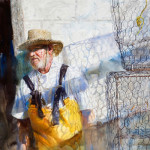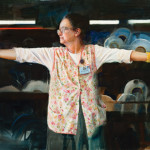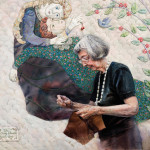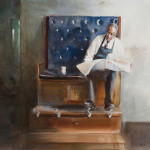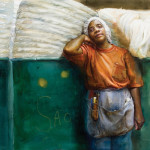By now you have probably heard about our current Main Gallery exhibition, Mary Whyte: Working South. The exhibition has been written up in magazines, newspapers, online newsletters, and even has a billboard on I-26. And if you have seen the exhibition, you know that all of the attention is merited. Working South includes fifty watercolor paintings and sketches that depict blue-collar workers across the American South. The portraits are astonishingly beautiful, capturing weathered hands and timeworn faces with incredible detail and sensitivity.
As our curatorial team unpacked the paintings for installation, I knew the works would be beautiful, but was overwhelmed to see them in person. The scale, the color, the sharp detail contrasted with delicate washes—I couldn’t stop staring at the paintings. And the works are made all the more stunning by the exquisite frames, handcrafted by Whyte’s husband and master gilder, Smith Coleman. Each frame is unique to the painting, picking up on a subtle nuance of the work. The frame surrounding a portrait of a tobacco farmer has the rough hewn feel of an old barn, and the frame for a portrait of a waterman is embedded with fishing net, layered with silver leaf. This exhibition has so many wonderful details to absorb, down to Whyte’s sketchbook, brushes, and palette used to create the paintings.
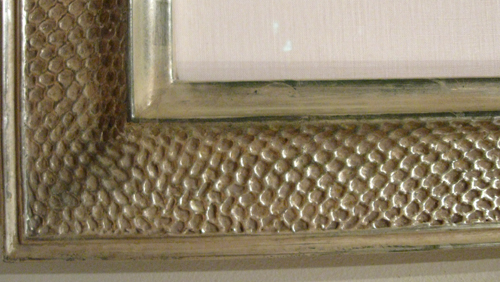
So if you haven’t been to the Gibbes in a few weeks, make sure you get here before Working South closes on September 9. Join us on July 8 for Working South Sunday, when the museum will be open free of charge from 1 to 5pm. And you never know, you may see the artist herself wandering through the gallery!
—Pam Wall, curator of exhibitions, Gibbes Museum of Art
Published May 31, 2012


